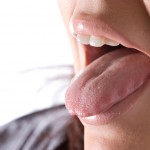
Xerostomia or dry mouth is estimated to occur in between 10-26% of men and 10-33% of women. Typically, between 0.5 to 1.5 litres of saliva is produced per day and while a subjective sensation of dry mouth can be found in people with normal salivary gland function xerostomia has many causes including some systemic diseases, medication, auto-immune conditions and radiotherapy. Management options range from water sipping, salivary substitutes, chewing gum, sugar-free lozenges and topical mucosal lubricants to pilocarpine, cevimeline, and amifostine.
The aim of this review was to assess the efficacy of topical sialogogue spray containing malic acid 1% for treating xerostomia.
Methods
The review protocol was registered on PROSPERO. Searches were conducted in the PubMed, Cochrane Library, Embase, ClinicalTrials.gov and Web of Science databases. Randomised controlled trials (RCTs) comparing the use of sialagogue on spray (malic acid 1%) combined with xylitol and fluoride against placebo spray were considered. Two reviewers independently selected studies, extracted data and assessed study quality using the Cochrane risk of bias tools. Outcomes included xerostomia symptom score and salivary flow rate reported as standardised mean difference (SMD) and mean difference (MD) with 95% confidence intervals (CI).
Results
- 5 RCTs involving a total of 244 patients were included.
- 3 of the studies were at high risk of bias and 2 at unclear risk.
- 3 studies used the Dry Mouth Questionnaire (DMQ) and 2 studies the Xerostomia Inventory (XI) score and, Visual Analogue Scale (VAS) scores.
- At two weeks
- relief of dry mouth was better in the malic acid group than the placebo spray group SMD = 0.79 (95%CI: 0.46 to 1.13) [5 studies].
- the DMQ score was better in the malic acid group than the placebo spray group MD = 2.02 (95%CI: 1.95 to 2.09) [3 studies].
- more salivary flow was measured in the malic acid group than the placebo spray group MD = 0.06 (95%CI: 0.03 to 0.09) [ 5 studies].
- more stimulated salivary flow was also measured in the malic acid group than the placebo spray group MD = 0.14 (95%CI: 0.03 to 0.24) [4 studies].
Conclusions
The authors concluded: –
As the review has demonstrated, topical sialagogue spray containing malic acid 1% is effective for xerostomia. However, all studies have only shown that in the two-week short-term course of treatment, the advantages of this spray are obvious, without long-term high-quality studies to verify its long-term curative effect. Although there is evidence that these acid-containing gustatory stimulants of salivary secretion can significantly reduce tooth erosion, more peer studies are needed to verify this
Comments
The authors registered their review protocol on PROSPERO and search a good range of databases including only RCTs. Five trials were included although these were small and of short duration with none of them being at low risk of bias. The age profile of patients was similar in 4 trials ranging from 42 to 54.6 years while an older group 76.5 to 77.8 years was seen in the fifth study. Frequency of spray application also varied between the studies. While the findings of this review suggest some benefit from the spray containing malic acid 1% the available studies are small and of short duration and do not assess adverse effects. Additional high quality well reported studies of appropriate size are needed to better information on frequency and dosage of the spray. In addition, information is needed on long-term use, side effects, comparisons against other agents and patient focused outcomes.
Links
Primary Paper
Liu G, Qiu X, Tan X, Miao R, Tian W, Jing W. Efficacy of a 1% malic acid spray for xerostomia treatment: A systematic review and meta-analysis. Oral Dis. 2021 Dec 26. doi: 10.1111/odi.14116. Epub ahead of print. PMID: 34954846.
Other references
Dental Elf – 24th Oct 2018
Sjögren’s syndrome: treatments for dry mouth and hyposalivation
Dental Elf – 3rd Sep 2013
Insufficient evidence for effects of non-pharmacological interventions for the relief of dry mouth
